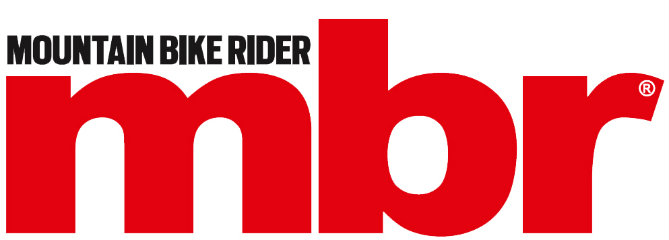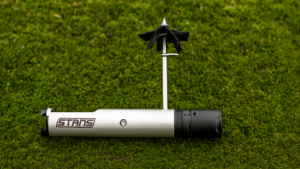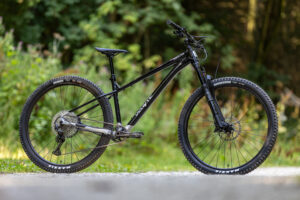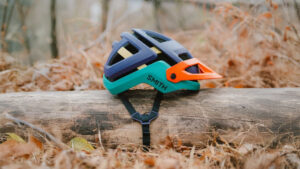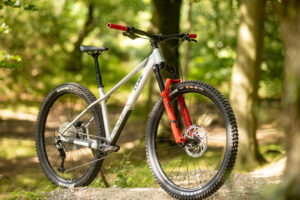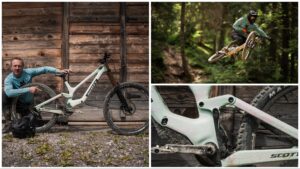The best cross-country (XC) mountain bikes are all about raw speed. But their light weight and excellent efficiency also makes then ideal for fast, flowing singletrack as well as racing.
Welcome to a lean, mean collection of the best cross-country mountain bikes built for speed, all put through their (race) paces by our expert team of reviewers. Lighter and faster than the more versatile bikes from our list of best mountain bikes, these whippets are not for the faint-hearted.
While all these bikes bring distinctively different approaches to what makes an XC race winner, there is a thread that ties them all together: all are rolling on 29in wheels. From hardtail to full-suspension options, some feature traditional XC geometry, while others are a little slacker in the head angle with more suspension to take on the increasingly technical modern cross-country tracks, and also thanks to the growth in popularity of down-country bikes.
Best XC race bikes – quick list
- Best XC hardtail – Trek Procaliber
- Best XC full-suspension bike – Specialized Epic 8
- Best budget XC hardtail – Voodoo Bizango
- Best budget XC full-suspension bike – Specialized Chisel
Best cross-country mountain bikes: hardtails

The latest Trek Procaliber 9.7 keeps the same comfortable frame but gains a SRAM wireless T-Type transmission.
1. Trek Procaliber
Best XC hardtail for a compliant ride
Frame: OCLV Mountain Carbon | Frame sizes: S, M, M/L, L, XL, XXL | Suspension travel: 110mm f | Weight: 11.01kg | Rating: 10/10
Reasons to buy:
- Comfortable as well as speedy
- Wide size range
Reasons to avoid:
- Lacks a dropper post for modern XC courses
We tested the Trek Procaliber 9.7 a few years ago and it blew the competition away to take the top step of the podium in our group test. The current model hasn’t changed significantly – it still uses the same OCLV carbon frame with effective, trail-smoothing IsoSpeed decoupler, that lets you save energy and channel more into effort into reaching the finish line first.
When we tested it we were blown away, writing: ‘From the first pedal stroke the Procaliber took the lead in this test and never faltered. We were instantly won over by its effortless turn of speed, in part thanks to the carbon wheels, but it’s also about the more forgiving ride quality of the frame. Bumps just didn’t chip away at our speed as much as they did on the other bikes on test. And even when we were out of the saddle, the Procaliber was still the smoothest bike here.’ High praise indeed.
Read our full test review of the Trek Procaliber 9.7

Giant’s XTC SLR 29 1 is dressed to impress.
2. Giant XTC SLR 29 1
Best budget XC race hardtail
Frame: ALUXX SLR aluminium | Frame sizes: S, M, L, XL | Suspension travel: 100mm f | Weight: 12.29kg | Rating: 10/10
Reasons to buy:
- Giant Crest forks adds accuracy
Reasons to avoid:
- Needs lock-on grips
- Tall top tube height
A light frame, precise fork, and stellar handling ensured the Giant XTC emerged out in front when we tested four budget XC race hardtails. There’s an obvious pedigree bred from years of racing development, and the result is a bike that we described as “startlingly fast yet totally forgiving”.
Whether you’re planning to dip your toe into XC racing, have a crack at a marathon event, or fancy the challenge of a long-distance trail such as the South Downs Way, the Giant XTC SLR 29 1 is up for the fight.
Read our full test review of the Giant XTC SLR 29 1

The Voodoo Bizango Pro won our hardtail of the year test in 2022, and carries so much pace that it would make a superb starter XC bike.
2. Voodoo Bizango Pro
Best budget mountain bike for racing and long rides
Wheel size: 29in | Frame sizes: S, M, L, XL | Weight: 13.2kg | Suspension travel: 130mm front | Rating: 10/10
Reasons to buy:
- Good geometry and superlative spec choices
- Low weight and comfy ride feel
Reasons to avoid:
- BB could be a finger’s width lower
- Fatter tyres and more standover clearance would be welcome
The Voodoo Bizango has smashed pretty much any test it’s ever entered, winning our Hardtail of the Year award multiple times, earning regular podium places on our list of the best hardtail mountain bikes, and impressing everyone who rode it. It must have been very tempting for Halfords to stick with the old frame, add a modern colour, fettle the spec and keep mixing up that winning mix.
We’re extremely glad they didn’t then. For Halfords’ sake, standing still in the ultra competitive hardtail market is suicide. And for our sake, the new Bizango Pro is much the superior bike to anything Voodoo has made before, and ultimately more fun to ride. Great brakes mean you can go faster in the happy knowledge you can stop when you need to, while the 12-speed shifting means you can cruise the hills faster than plenty of full-sus bikes out there. And then there’s the fork, it’s hugely superior to anything we’ve tried before on a £1k hardtail: air-sprung so you can set the sag to your weight, effective rebound dial for control, and a really smooth feel.
Read the full Voodoo Bizango Pro review

Scott’s Scale has an enviable racing pedigree.
3. Scott Scale
Best chassis for upgrade
Frame: 6061 Custom butted aluminium | Frame sizes: S, M, L, XL, XXL | Suspension travel: 100mm f | Weight: 12.97kg | Rating: 9/10
Reasons to buy:
- Fast
- Quiet
- Composed ride
Reasons to avoid:
- No tubeless-ready tyres
- Basic fork gets overwhelmed easily
Some brands use race teams for marketing, others focus on product development; Scott clearly does both. As such, the Scale is a finely tuned XC race machine with a huge trophy cabinet to prove it. It’s a light bike for the money, and with a stance and fit that will appeal to performance-minded riders, it will come as no surprise that the Scott feels quick straight off the mark. In our review, we explained this was “assisted no doubt by the wide 92mm bottom bracket shell and boxy, flattened chainstays”. Which meant that “putting the power down out of the saddle feels both natural and rewarding”.
Unfortunately the fly in the ointment is the basic RockShox Judy fork. It doesn’t have the damping control to match the speed you can generate from the chassis, so you end up using more energy to stay on line and maintain that valuable momentum. Given that the frame deserves it, we’d recommend stepping up to the Scale 960 at £1,699 which runs a stouter Fox 32 Rhythm.
Read our full test review of the Scott Scale 965
Best cross-country mountain bikes: full-suspension

The new Specialized Epic WC is as much brain as brawn.
1. Specialized Epic 8
Techno tour-de-force
Frame: FACT 12M Carbon | Frame Sizes: XS, S, M, M/L, L, XL | Suspension travel: 120mm f, 120mm r | Weight: 10.49kg | Rating: N/A
Reasons to buy:
- Superlight yet impressively controlled and practical frame
- Automatic Ai suspension leaves you with more mental capacity for tactics
- Perfect race componentry
Reasons to avoid:
- Premium performance comes at a premium cost
- Flight Attendant auto-suspension is bound to be an opinion divider
Specialized always likes to be one step ahead of the competition, whether it’s on the race track or the shop floor, and the new Epic 8 is the most advanced XC bike on the planet. Of course, that also means that the price tag is out of this world.
But you do get a mind-bendingly fast machine that’s now in its 8th iteration – hence the name. Perhaps the most impressive part of this bike is the way it blends old-school know how – excellent handling, efficient pedalling, capable suspension – with a fork and shock that work together under the control of a sophisticated brain to make sure you’re always in the optimum mode. Which lets you get on with the job of showing your competitors a clean pair of wheels.
Read our full review of the Specialized Epic 8 WC

Trek’s Supercaliber SLR 9.9 XX AXS Gen 2 builds on a winning formula.
2. Trek Supercaliber Gen 2
Best money-no-object XC race bike
Frame: SLR OCLV Mountain Carbon | Frame Sizes: S, M, L, XL | Suspension travel: 100mm f, 100mm r | Weight: 9.75kg | Rating: 9/10
Reasons to buy:
- Conventional frame configuration
- Predictable handling and suspension
- Race-ready build
Reasons to avoid:
- Press-fit BB servicing sucks (but you’ll find them on most XC race bikes)
- Narrow tyres and no power meter on the top spec
Don’t be fooled by the dropper post; Trek’s new Supercaliber is still a pure-bred XC race bike that thrives on speed and success. The latest frame design is a subtle evolution of the original, which means it’s more about ironing out the creases than starting from scratch. The proprietary IsoStrut suspension minimises weight while maximising stiffness, so you get a smoother, faster ride, without losing forward momentum in a sprint or on the climbs.
As we said in our review, “the stiff frame, progressive suspension and increased anti squat all boost ego when you’re putting the effort in”. And while the dropper post adds a tiny bit of weight to the sub-10kg package, it lets you attack on the descents as well as the climbs.
Read our full review of the Trek Supercaliber SLR 9.9 XX AXS Gen 2

Integrated suspension system conceals the RockShox NUDE 5 shock inside the full carbon frame.
3. Scott Spark RC
Best XC bike for on-the-fly suspension optimisation
Wheel size: 29in | Frame sizes: S, M, L, XL | Weight: 11.12kg | Suspension travel: 120mm f/120mm r | Rating: 9/10
Reasons to buy:
- Ruthless in its efficiency
- Hidden shock should need less maintenance
- Remote suspension adjust
Reasons to avoid:
- Suspension could be more supple in Descend mode
Scott’s Spark has won more trophies than any other race bike, with double Olympic gold back in 2016. This latest version gets a sleek new frame and more modern geometry, meaning that while the Scott Spark has lost none of its potency, it has now become even more versatile. It also gets a hidden shock for reduced maintenance, and remote suspension control for uphill efficiency without compromising on downhill confidence. It’s also one of the sleekest, cleanest designs on the planet.
Read our full review of the Scott Spark RC WC AXS

If you’re looking to get started in XC racing, the Specialized Chisel FS brings top-flight pedigree to a realistic price point.
4. Specialized Chisel FS
Best budget full-sus XC bike
Wheel size: 29in | Frame: Alloy, 110mm travel | Sizes: S, M, L, XL | Weight: 11.25kg (24.8lb) | Rating: 9/10
Reasons to buy:
- Genuinely very fast
- Efficient and really well sorted
- Affordable price
Reasons to avoid:
- SX weight and suspension compromises make it worth levelling up to the Chisel Comp if you can
- Not the lightest down-country option
Introduced in 2024 to offer a more affordable alternative to the boutique Epic 8, Specialized’s all-alloy Chisel FS makes a great starter XC bike. Taking the best elements of the Epic and packaging them in an alloy frame with clever welded junctions to improve strength, the Chisel is carries a little more timber than its more exclusive stablemate, but its still seriously fast across ground, with a riding position and handling that’s arguably more user-friendly.
There are three bikes in the Chisel range, with a burlier down-country-style Chisel Comp Evo, but for racing we’d recommend the Chisel Comp, as it has less travel, reduced weight, and faster rolling tyres. Specialized also offers a frameset-only option that would work great if you’ve got a load of parts kicking around the garage.
Read our full test review of the Specialized Chisel FS

Santa Cruz Blur is not the stiffest race bike, but it’s one of the lightest and a lot of fun to ride.
5. Santa Cruz Blur
Punches well above its weight
Frame: CC carbon, 100mm | Frame Sizes: S, M, L, XL | Suspension travel: 100mm f, 100mm r | Weight: 10.41kg | Rating: 8/10
Reasons to buy:
- So light it barely needs any human propulsion
Reasons to avoid:
- Rear suspension is not the firmest under power
The Santa Cruz Blur barely makes an impression on the scales, weighing a scant 10.4kg in size large with the build kit shown above. But it certainly makes an impression on the trails, with a comfortable ride and effortless momentum over sections that would have most XC bikes tensing up and slowing down. There’s no shortage of urgency to the acceleration, and it’s surprisingly capable downhill, but there are better climbing XC bikes.
We found the suspension tune gave loads of grip, but absorbed some of our energy on the climbs. Luckily there’s a remote lockout to compensate, but it’s not as sophisticated as Scott’s TwinLoc system.
Read our full test review of the Santa Cruz Blur XC CC X01 AXS RSV

Guy in survival mode on the Pinarello Dogma XC race bike.
Also worth considering
Among the many XC bikes we’ve tested that haven’t made the cut for this guide is the Pinarello Dogma XC. Yes, this is the bike ridden by Tom Pidcock to Olympic victory in Paris 2024, as well as the World Mountain Bike Championships in 2023. So it has some pedigree, but when Guy Kesteven tested it for us he found it more than a handful. Chiefly he found the suspension too progressive, and the geometry too conservative, leaving him lacking confidence to push in technical sections. Of course it doesn’t seem to hold Pidcock back, but for mere mortals there are probably more friendly options on the market.
Contrast that with Pidcock’s previous race bike – a blacked-out BMC Fourstroke – that we felt offered the blistering speed of a thoroughbred XC bike, with the finesse and descending capability of a down-country model.

The Specialized S-Works Epic WC seemed to offer the worst of both worlds between a hardtail and a full-suspension XC bike.
Nor was Guy particularly enamoured with the Specialized S-Works Epic World Cup – Specialized’s answer to the Trek Supercaliber, and a kind of half-way-house between a hardtail and XC full-suspension bike. He found the minimal travel and quirk of the bespoke suspension didn’t really deliver better traction on the climbs, or confidence and grip on the descents, meaning that a full-bore Epic would be a more effective race weapon for most riders.
The Lapierre XRM 6.9 is the French brand’s World Cup XC bike with the comfort blanket of a little more travel. But that extra travel hasn’t really given it a plusher ride, and at over 13kg it feels like it’s in the off-season, rather than in racing trim. We gave it a 7/10, preferring the more versatile handing and suspension of the Trek Top Fuel, given that the Lapierre was approaching trail bike weight.

James Bracey trying to break the sound barrier on the Pivot Mach 4 SL Team.
Pivot’s extremely luxurious Mach 4 SL Team will make a big dent in anyone’s bank balance, but tester James Bracey absolutely fell for the reactive pedalling response and short-travel hilarity, saying it “reacted to inputs insanely fast, and whipping it around corners and pushing the limits of the Maxxis Rekon Race tyres was some of the most fun I’ve had on an XC race bike in years”. Heady praise, but given that this was a limited-time first ride on foreign trails, we haven’t given it a full test and a rating.
Boutique American rival, Intense, didn’t leave us so enthralled when we tested the Sniper T Expert. Rating it 7/10, Alan Muldoon commented that the geometry was out of date, and the trail-friendly modifications actually reduced its effectiveness both as a race bike, and a down-country option.

If it’s good enough for van der Poel, then it’s good enough for us: Canyon’s Lux World Cup CFR Team.
The Intense was up against the Canyon Lux World Cup and Vitus Rapide FS in that test. The Canyon earned a favourable 9/10 with its highly-focussed, razor-sharp speed tool, while the Vitus managed to walk the thin line between competitive and racy, and fun and composed during training.
How we tested
Each of the bikes above was put through its paces in a rigorous testing process, ridden hard over many miles by experience bike testers. Judged on performance when sprinting, climbing, descending, riding features such as drops, jumps, root sections and rock gardens, only the bikes which scored highly in reviews have been included here. These are the best of the best.

Evie Richards performs at UCI XCO World Championships in Glentress, Scotland on her Trek Supercaliber // Bartek Wolinski / Red Bull Content Pool.
What is XC racing and what makes a good race bike?
In many ways, XC racing is the foundation upon which our sport has been built. Yes, new styles and disciplines come and go, or morph in the way that 160mm-travel all-mountain bikes transformed into enduro rigs. Cross-country racing, however, has weathered the storms of fashion and remains ingrained in riding culture to this day, and with the success of the Olympics and stars such as Evie Richards, Tom Pidcock and Mathieu van der Poel now couldn’t be a better time to try one of these addictively fast machines. If you want something more versatile, check out our buyer’s guide to the best down-country bikes as these bring a little bit more suspension travel and allow you to broaden your riding horizons.
Like all survivors, XC racing has prospered by evolving. Long gone are the three-hour mud-fests on non-challenging terrain. Courses are now shorter and more demanding, challenging riders and equipment, while pushing the visual aspect to make it more appealing for spectators.
A typical XC race loop now features punchy climbs, descents worthy of any EWS stage plus more purpose-built features for the TV cameras. XC riding and racing is thrilling to watch because it is no longer purely a test of raw fitness; it’s about pushing skill levels and bike handling as much as heart rates.

We had to borrow Lycra from our sister publication for this XC hardtail test.
Full-suspension Vs hardtail: which makes the best XC race bike?
We love hardtails at mbr. XC race bikes have never been in a better spot, the bikes rising to the challenge of modern courses and the demands of the next generation of racers.
And while most of the racing elite have smoothly transitioned to 29er full-suspension bikes, if you’re just getting into XC racing, a trusty 29er hardtail is a much more affordable way to get your hands on a lightweight, efficient bike. Which is why we have several XC 29er race hardtails selected for this list.

The Scott Spark RC is one of the most iconic race bikes of modern times.
Which bike should I choose for cross-country mountain biking?
As XC courses have evolved, so too have the bikes. As such, modern XC races will probably see very few races won on a hardtail, with lightweight full-suspension bikes proving to be the most efficient over the majority of race courses. Even at the highest level of World Cup racing, the pros have realised that effective suspension and confidence-inspiring geometry can bring bigger gains than just weight saving and efficiency alone.
So for most riders, a full-suspension XC bike will reduce fatigue on a modern race course, allowing you to use that saved energy to attack the competition. And when you’re not between the tape, a full-sus race bike can also hold its own as a trail bike, giving extra versatility.

Riders like Tom Pidcock are bringing a fresh injection of style and excitement to XC racing.
However, if you’re toying with trying a few XC races, but also fancy the idea of a gravel bike, an XC hardtail would make a better tool. Why? Well, they’re likely to be just as fast as a gravel bike on most actual gravel roads, but with the right cockpit and geometry for bombing off-piste when the opportunity arises. And who wants to spend their life grovelling along a gravel road when you could be ripping some prime singletrack?

